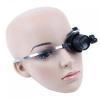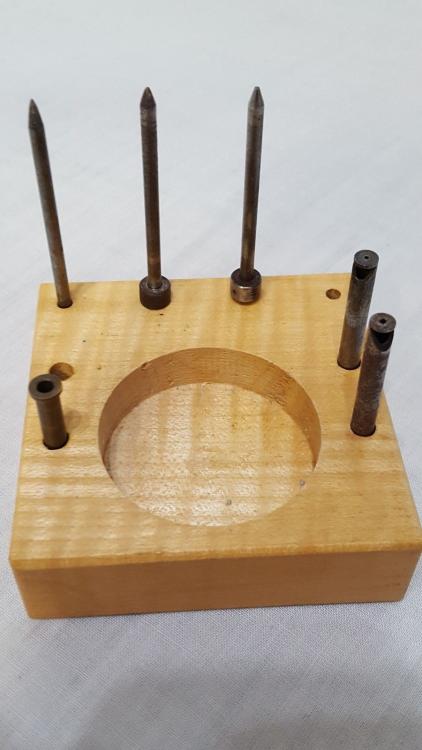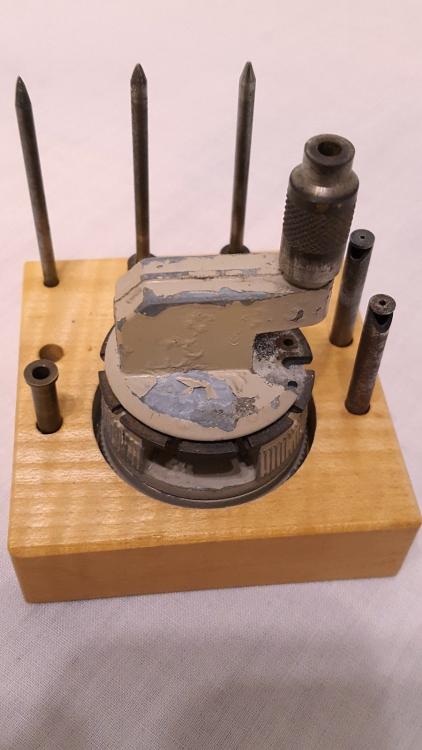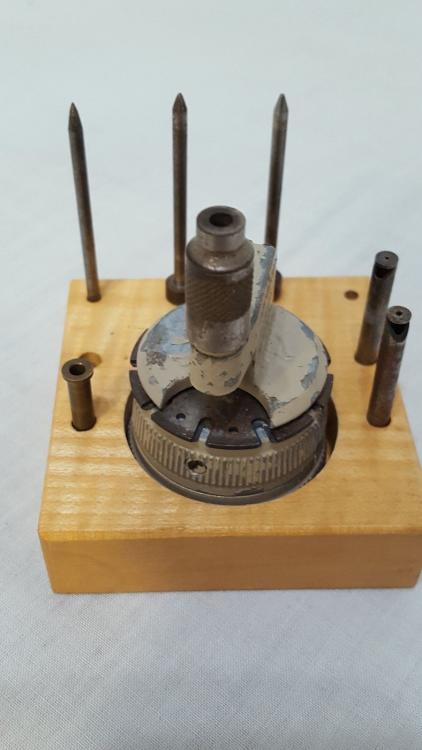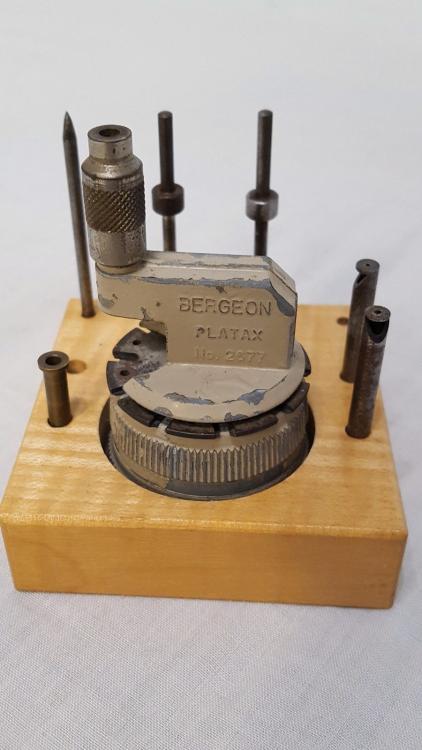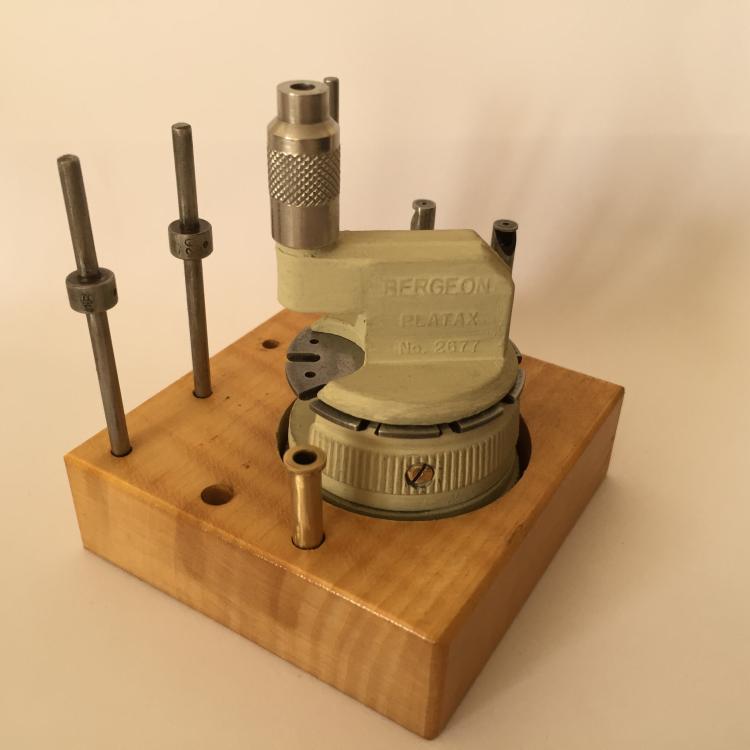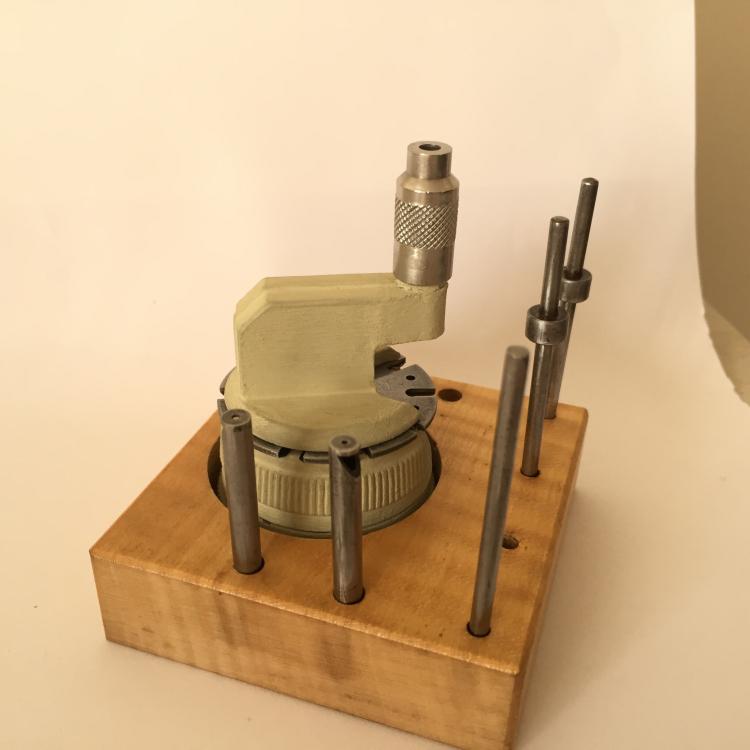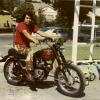Leaderboard
Popular Content
Showing content with the highest reputation on 07/12/17 in Posts
-
I just won this on a popular online auction site, so don't have it in hand yet, but I'm reasonably happy with what I paid for it. I'm pretty confident on the date being the back of the case has an engraving dated 1927. From what I understand up until around 1933 Unicorn was a brand marketed by Rolex in Australia, it uses a movement made by Beguelin & Cie SA (BTCo). The plating on the case is heavily worn on the back, but I am attending a workshop at the end of the month on gold plating, so will hopefully be able to get that fixed. I know its not a Rolex, but its probably about as close as I will come to ever owning a real Rolex. This will sit on my back burner whilst I practice on a few other movements before I feel confident to work on this watch.2 points
-
Thanks for the support! Well I received my alternate light sources in the post the other day and set about applying luminous paint and tritium tubes where needed. The compass was originally painted with radium in five different locations. Radium paint glows all the time without need of recharging under UV light. Tritium does the same but it's not quite as bright as radium paint and since it is also radioactive tritium is now kept in small glass tubes. I installed the tritium tubes under the compass card and on the large crystal which is set in the bezel. The luminous paint was applied to the compass card, and the marker on the bowl lid. I was on the fence about whether or not to use tritium throughout but felt the tubes would be too distracting and opted to hide them where possible. Below you can see the four tubes which were installed in the tray beneath the compass card. Originally the tray would have been painted with copious amounts of radium paint. The luminous paint used is a Europium based paint from a company called United Nuclear. I've not used it before but opted for their product since you can get a course grain base powder which emits a brighter light. Below you can see the compass card with the north marker now painted with Europium. In a test run, I filled the compass bowl with purified kerosene and secured the crystal and lid with all eight screws. These have to be torqued in much the same way you would torque the bolts of a cylinder head. Satisfied that the flourosilicone gasket was doing it's job, I reopened the lid and installed the compass card before topping off the kerosene. The large bubble was dealt with after rescuing the bowl lid. The compass was filled to the brim using the filler hole on the side of the bowl. This turned out to be quite a job because even though I had a syringe for filling the bowl, kerosene doesn't play nice with rubber and the piston in the syringe was made of rubber. Whenever the kerosene mades contact with the rubber it would expand and seize up. I went through three syringes before getting nimble enough to ensure the kerosene never contacted the piston head. With the bowl filled completely I tightened down the filler cap and sent the bowl on end. Here it will stay for a few days to allow any air bubbles to appear and also ensure the gasket continues to hold.2 points
-
So I picked up this bad boy on eBay from someone in Spain. It's pretty messed up cosmetically, and missing a heeled bush and a removing punch. Considering all that, I definitely overpaid, but oh well. I don't know how rare these are to find on eBay, so I just decided to grab it. I scraped off all the old flaking paint and found a very similar color paint at Michaels. Not a very professional job and you can see some brush strokes, but all in all it's much better. I know the colors look off in the pictures, but that's a camera white balance issue. In real life the colors are very similar... a completely unattractive greenish gray oatmeal. Why Bergeon used this color I'll never know. Carefully removed the rust from the metal plate with steel wool and very very fine sandpaper. Did the same with the punches and bushes which had a nice coat of oxidation on them, then put them through the ultrasonic like they were watch parts. The original chrome plating had worn away on the top knurled nut, but not to fear! I busted out my little Caswell "Plug N Plate" kit and used "copy chrome" (real chrome plating is dangerous and pretty toxic apparently, but I can't see much of a difference between old chrome plate and Caswell's 'copy chrome' - looks about the same). The biggest unknown was if I could find replacement punches / bushes and yep! I just ordered them from perrinwatchparts.com... they were super expensive. I definitely overpaid for these, but again, oh well. I just wanted the tool to be complete. So ta da! I now have a Platax tool. I'm going to break out one of my many Bulova movements with a broken staff and experiment with using this tool on the poor thing. I don't know the I really needed this tool, per se. I have a nutcracker - type roller remover which works pretty well (I might have broken a few staffs by squeezing a little too much, but those staffs were broken anyway), and I have the little K & D balance remover tools for my staking set. I don't see how the Platax tool would be so so much better than the K & D tool, and I'd imagine any objections or concerns about the K & D tool widening the hole in the balance by using force instead of cutting out the old staff would also apply to the Platax tool, no? It also uses force to drive out the old staff while keeping the balance arms pinned. So maybe I didn't strictly need this, but when it popped up on eBay I couldn't resist, because I want to be able to follow along with what Mark does as closely as possible... and I'm still so new at doing this. So, now I have a Platax tool, a complete 'inverto' K & D staking set (got for under $100, go eBay!), and just picked up a Seitz Jeweling tool (ouch, that was too expensive). I am now wondering what other real watchmaker specific tools you need to have to be able to deal with most, if certainly not all, the issues you find on vintage watch movements ??? I mean, I'm not going to buy an old mechanical watch washer and put it in my one bedroom apartment in manhattan, not going to happen (at least, not if I don't want my husband to divorce me ). So I make do with a tiny, cheap Chinese made ultrasonic machine. And obviously, I'm not going to buy a lathe either, for similar reasons (space constraints, expense, plus wouldn't know how to even begin to use it)... but I'm wondering if I've covered almost everything else? In terms of being able to make watch parts, yeah, that's the holy grail. Living in manhattan comes with many advantages and disadvantages. The disadvantages are obviously space constraints and expense of living. But the advantages are there are lots and lots of resources. In fact, there are a few "Maker Spaces" in the city, which are co-ops you can join and you can use their tools, like CNC mills, CNC lathes, 3D printers, 3D scanners etc etc... you can join these co ops for not much money, and they teach you how to use the tools.... I know that the consensus so far is that 3D printing watch parts won't work, because the machines are not accurate enough on such a small scale. But the CNC lathes? The CNC mills? Could they do micro-machining, in theory? It's something to think about. I think I'll create another thread about that sometime. Maybe I can pick up some good tips. Anyway, hooray for overpriced watch tools! They are so much fun!1 point
-
1 point
-
No problem [emoji106] Details sent as well as the pic of the watch so belts and braces. A while back I paid around €10 just for postage on a stem sent from just outside Rome so expect a higher than normal postage cost. Sent from my Honor 5c1 point
-
I'll try and get one tonight. The Europium paint is pretty darn bright but it does diminish over time. The tritium stays bright enough to illuminate the card even when the Europium has warn off. I haven't completed assembly of the entire compass just yet as there just may be a small leak in the bowl. If you look at the screw hole at four o'clock below you'll note that it's slightly larger than the rest. It seems these threads are stripped out and not allowing the screw to secure the lid as tight or as evenly as possible. Although fluid isn't running out of the bowl, a small bubble has developed and I'm just not happy with how well that screw is gripping. Sadly none of my taps or dies go above 1.8m so I've had to order a larger set. Once they arrive I'll re-thread the hole an cut a matching screw to fit.1 point
-
One Italian seller does stock them but want the numbers on the back of the watch. Can you post then I'll pass onto them and find out costs Inc postage. Sent from my Honor 5c1 point
-
1 point
-
Excellent, truly excellent, got a lume shot? Sent from my Hudl 2 using Tapatalk1 point
-
I Like it too DJW . That watchband is a good choice . A very clean looking combo . I know you will enjoy wearing it to work .1 point
-
We had something in Sweden called bräkleen from CRC . But don't now if that has tri any more? Tri is not very good for the environment.1 point
-
Since you are in the US, you can get it, search ebay for trichloroethylene. It's gotten expensive, though, 500ml for about 50$ US. Nasty stuff, too. Be very very careful when using it. I use it as "One-Dip" for hairsprings and jewels, and try really hard not to inhale any fumes or get any on my skin. A solvent often used as a substitute that is not quite as dangerous is Tetrachloroethylene, otherwise known as "perc" or dry cleaning fluid. I've found it sold in auto parts stores as brake cleaning fluid. I don't know if it will work as well in your application, as I don't use UV glue.1 point
-
1 point
-
not surprised you can't get it any more. I assume that it is trichloroethylene which is now banned almost everywhere due to its carcenogenic properties. Does acetone not work at all? Failing that is it not possible to clean up any excess glue with IPA before curing it under the light?1 point
-
Try here; http://www.ranfft.de/cgi-bin/bidfun-db.cgi?10&ranfft&2&2uswk&Molnia_3602 and here; http://forums.watchuseek.com/f10/different-variants-molnija-3602-movement-390461.html and here; https://pocketwatchdatabase.com/guide/company/molnija/serial-number-lookup and here; http://cgi.linuxfocus.org/~guido/molnija-pocket-watch/ further googling for "Molnija" or "soviet pocket watch" etc will bring up tons of info. They're quite nice watches, maybe a little under rated.1 point
-
I'm not sure which kind of risk we're talking here. If it's about not receiving the real item, when paying with PayPal, and/or a Credit Card, the buyer is 100% protected, even for items lost or stolen in transit. That even if the price paid is ridiculously low, as thread full of believer demonstrated on another forum. If the risk is that the watch is not up to promise, that would be subjective. But there are plenty of online reviews to help decide. For sure, it is an high quality watch. BTW. If you read industry news, it's public knowledge that the ETA group has an excess production, and the Swiss in general are not growing anymore. Maybe this sales liquidation is a consequence of that.1 point
-
Good evening everyone. I am Andy and I am a self taught watch enthusiast. I repair watches and have been doing so for the past year or so. I do not do this as a full time job but as a hobby and by word of mouth. I have had some interesting watches to repair and am learning new things every time I work on a watch or trawl through YouTube and watch videos. I look forward to getting to know everyone and learning every day. Andy1 point
-
Well I would definitely start with Moebius 9010 (for train wheels and balance endstones) and 9020 (for train wheels) if you are working on Pocket Watches. Moebius 9415 is a must for Pallet/Escape wheel teeth. A quality silicon grease. Moebius D5 is essential (barrel arbor, motion work). Molycote DX or Moebius 9501 grease for keyless work. Moebius 9501 or 9504 for high friction (e.g. Cannon pinion, Setting lever spring and anything at high friction). Moebius 8200 grease for mainspring. Moebius 8217 for barrel wall (automatic watches) It's a lot but at a minimum get 9010, 9415, D5 and 8200 I hope this helps. Recommended Lubricants for Getting Started.pdf Moebius_Oil_Chart.pdf1 point




